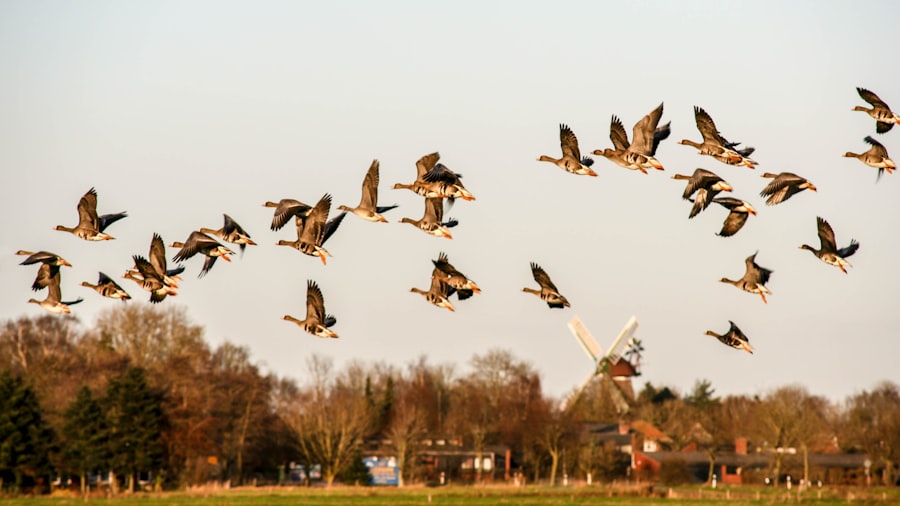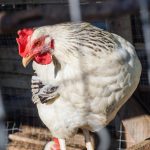Peafowl and chickens are distinct avian species with unique characteristics and behaviors. Peafowl, native to South Asia, are renowned for their vibrant, iridescent plumage and elaborate tail displays used in courtship. These omnivorous birds consume insects, plants, and small animals, and are recognized for their loud, far-reaching calls.
Chickens, in contrast, are domesticated fowl primarily raised for egg and meat production. They exhibit a wide range of breeds and colors, possess strong social instincts, and are adept foragers. Chickens communicate through various vocalizations, including their characteristic clucking sounds.
Despite their differences, peafowl and chickens can cohabitate successfully when provided with appropriate care and management. The integration of these species in a mixed flock can offer mutual benefits and create a diverse avian community. Their contrasting traits and behaviors contribute to a dynamic and engaging environment when kept together.
Table of Contents
- 1 Differences in Care and Housing Requirements
- 2 Potential Challenges of Keeping Peafowl and Chickens Together
- 3 Benefits of Keeping Peafowl and Chickens Together
- 4 Tips for Successfully Keeping Peafowl and Chickens Together
- 5 Health Considerations for Peafowl and Chickens
- 6 Conclusion and Final Recommendations
- 7 FAQs
- 7.1 What are peafowl?
- 7.2 Can peafowl be kept with chickens?
- 7.3 Are there any considerations when keeping peafowl with chickens?
- 7.4 Do peafowl and chickens require the same type of housing?
- 7.5 Do peafowl and chickens have similar dietary needs?
- 7.6 Are there any health concerns when keeping peafowl with chickens?
Key Takeaways
- Peafowl and chickens have different care and housing requirements due to their size and behavior
- Keeping peafowl and chickens together can pose potential challenges such as aggression and competition for resources
- Benefits of keeping peafowl and chickens together include pest control and a visually appealing flock
- Tips for successfully keeping peafowl and chickens together include providing ample space and separate feeding areas
- Health considerations for peafowl and chickens include monitoring for diseases and providing appropriate nutrition and shelter
Differences in Care and Housing Requirements
Space and Exercise Needs
Peafowl are larger and more active than chickens, requiring more space to roam and exercise. They need room to move around and stretch their wings, which is essential for their physical and mental well-being.
Shelter and Predator Protection
Peafowl are more sensitive to cold temperatures and need adequate shelter during the winter months. Additionally, they are more susceptible to predators such as foxes, raccoons, and birds of prey, so their housing needs to be secure and predator-proof.
Chickens, on the other hand, are smaller and more adaptable to different climates. They are social animals that thrive in flocks and can be kept in smaller enclosures. Chickens also have specific roosting and nesting requirements, as well as the need for dust baths to keep their feathers clean and free from parasites. Furthermore, chickens are more prone to diseases and parasites than peafowl, so their housing needs to be kept clean and well-maintained to prevent health issues.
Potential Challenges of Keeping Peafowl and Chickens Together

While peafowl and chickens can coexist peacefully, there are potential challenges that may arise when keeping them together. One challenge is the difference in dietary needs between the two species. Peafowl require a higher protein diet than chickens, so it’s important to provide separate feeders for each species to ensure they are getting the appropriate nutrition.
Additionally, peafowl may bully chickens at feeding time, so it’s important to monitor their interactions and provide enough space for both species to eat without competition. Another potential challenge is the difference in behavior between peafowl and chickens. Peafowl are more active and can be territorial, especially during the breeding season when males display their elaborate tail feathers to attract mates.
This behavior may cause stress or aggression in chickens, so it’s important to provide enough space for both species to establish their own territories within the flock. Additionally, peafowl may be more prone to wandering off or flying over fences, which can lead to conflicts with neighboring properties or predators.
Benefits of Keeping Peafowl and Chickens Together
Despite the potential challenges, there are many benefits to keeping peafowl and chickens together in the same environment. One benefit is the diversity of colors, sizes, and behaviors that each species brings to the flock. Peafowl add a stunning visual element with their vibrant plumage and impressive displays, while chickens contribute with their variety of breeds, colors, and vocalizations.
This diversity can create a dynamic and interesting environment for both birds to thrive in. Another benefit is the mutual protection that peafowl and chickens can provide for each other. Peafowl are more alert and can sound alarm calls when they sense danger, which can help alert the more vulnerable chickens to potential threats.
Chickens, on the other hand, are more vigilant for ground predators and can help alert peafowl to threats from below. This mutual protection can help reduce the risk of predation for both species when kept together.
Tips for Successfully Keeping Peafowl and Chickens Together
To successfully keep peafowl and chickens together, it’s important to provide adequate space and resources for both species to thrive. This includes providing separate feeders for each species to ensure they are getting the appropriate nutrition without competition. It’s also important to provide enough space for both species to establish their own territories within the flock, especially during the breeding season when peafowl may become more territorial.
Additionally, it’s important to monitor the interactions between peafowl and chickens to ensure there is no bullying or aggression between the two species. Providing enough hiding spots and perches for chickens can help reduce stress and conflicts with peafowl. It’s also important to secure the housing and fencing to prevent peafowl from wandering off or flying over fences, which can lead to conflicts with neighboring properties or predators.
Health Considerations for Peafowl and Chickens

Quarantine and Monitoring
Peafowl are more resistant to diseases than chickens, but they can still be carriers of certain pathogens that may affect chickens. Therefore, it’s crucial to quarantine new birds before introducing them to the flock and monitor them for any signs of illness.
Chicken Health Considerations
Chickens are more prone to diseases and parasites than peafowl, so it’s vital to keep their housing clean and well-maintained to prevent health issues. Providing regular dust baths for chickens can help keep their feathers clean and free from parasites.
Regular Health Checks
Regular health checks are essential for both peafowl and chickens to monitor their overall well-being and address any health issues promptly. By prioritizing their health, you can ensure a happy and thriving flock.
Conclusion and Final Recommendations
In conclusion, keeping peafowl and chickens together can be a rewarding experience when done with proper care and management. While there are potential challenges such as differences in dietary needs and behavior, the benefits of diversity and mutual protection make it worthwhile to keep both species together in the same environment. By providing adequate space, resources, and monitoring their interactions, peafowl and chickens can coexist peacefully in a mixed flock.
To successfully keep peafowl and chickens together, it’s important to provide separate feeders for each species, monitor their interactions, and secure the housing and fencing to prevent wandering or conflicts with predators. Additionally, regular health checks and quarantine procedures can help prevent diseases and parasites from spreading within the flock. With proper care and attention, keeping peafowl and chickens together can create a diverse and dynamic environment for both species to thrive in harmony.
If you’re considering keeping peafowl with chickens, you may also be interested in learning about what vegetables quails eat. Check out this article to discover the best vegetables to feed your quails for optimal health and nutrition.
FAQs
What are peafowl?
Peafowl are large and colorful birds that belong to the pheasant family. The males are known for their extravagant and iridescent plumage, while the females are more subdued in appearance.
Can peafowl be kept with chickens?
Yes, peafowl can be kept with chickens. They are generally compatible with chickens and can coexist peacefully in the same living space.
Are there any considerations when keeping peafowl with chickens?
When keeping peafowl with chickens, it’s important to provide enough space for both species to roam and forage. Additionally, it’s important to ensure that the chickens have access to their own food and water sources to prevent competition with the peafowl.
Do peafowl and chickens require the same type of housing?
Peafowl and chickens have similar housing requirements, such as protection from predators and the elements. However, peafowl may require larger roosting areas and higher perches due to their size and ability to fly.
Do peafowl and chickens have similar dietary needs?
Peafowl and chickens have similar dietary needs, as they both require a balanced diet of grains, seeds, insects, and greens. However, peafowl may require a higher protein content in their diet compared to chickens.
Are there any health concerns when keeping peafowl with chickens?
There are no specific health concerns when keeping peafowl with chickens, as long as both species are provided with proper care, nutrition, and living conditions. It’s important to monitor the overall health and behavior of both peafowl and chickens to ensure their well-being.
Meet Walter, the feathered-friend fanatic of Florida! Nestled in the sunshine state, Walter struts through life with his feathered companions, clucking his way to happiness. With a coop that’s fancier than a five-star hotel, he’s the Don Juan of the chicken world. When he’s not teaching his hens to do the cha-cha, you’ll find him in a heated debate with his prized rooster, Sir Clucks-a-Lot. Walter’s poultry passion is no yolk; he’s the sunny-side-up guy you never knew you needed in your flock of friends!








